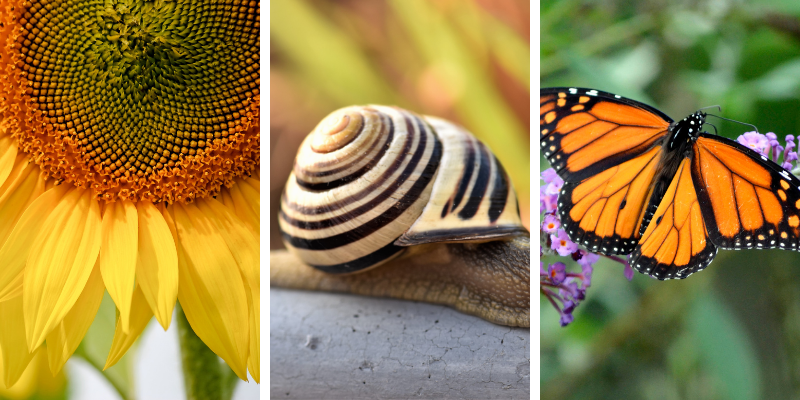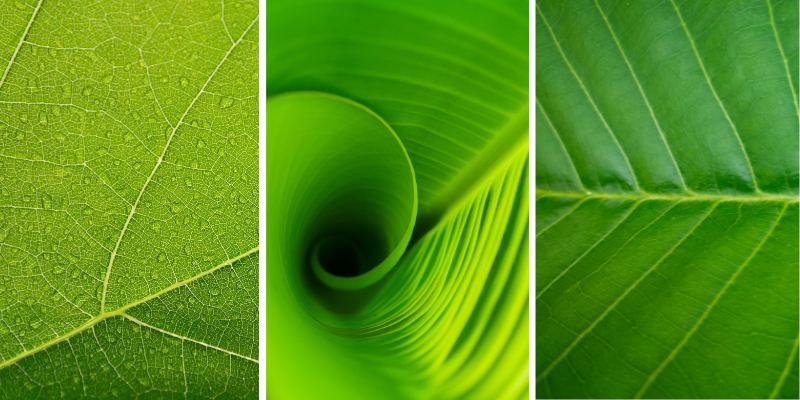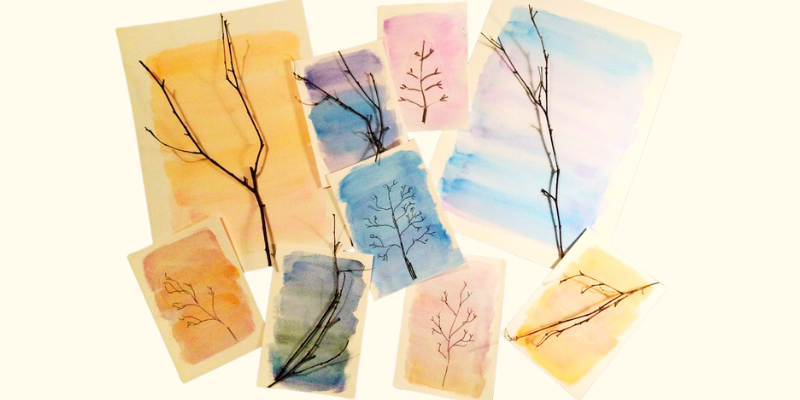For this post, Wonder at the World welcomes Åsa Jomård from ThinkDive to the blog to share her ideas about exploring the outdoors to learn about patterns in nature.
Nature is full of interesting patterns. The sunflower optimizes the packing of seeds by growing florets in a spiral pattern, while a leopard’s spots provide perfect camouflage. Not all natural patterns are this stunning, but spirals, spots, and stripes may nevertheless capture childrens’ attention. Getting outside is an engaging way to inspire students to explore patterns in nature.
In this post, find out why studying patterns is important and some ways you can use the observations to make crafts or art inspired by patterns in nature.

Why recognizing patterns is an important skill?
Patterns are important since they teach us about the natural world. If a student can discern or recognize patterns, they can make conclusions about relationships in the living world. Sometimes the reason why some animals have developed intricate patterns is a mystery, but solving these mysteries can lead to important insight that can help us solve other problems. The pattern on the male ornate boxfish may help scientists get ideas that could result in breakthroughs in cancer research.
Nature’s awe-inspiring designs are also the perfect inspiration for creativity. Designers, artists and architects have looked at the beauty in nature for ideas from everything from fashion and jewellery to packing materials and house designs.
What is a pattern?
A common way to think of a pattern is as something that repeats again and again. In many cases, the pattern might be obvious, for example, butterfly wing symmetry. Spider webs are not only beautiful but they can also be a fascinating example of symmetry. Often webs look the same whichever way you look.
Symmetrical forms like the bees’ honeycomb are stunning, yet, often nature does not display such strict regularity. Trees that lose their leaves during the winter months reveal their branching patterns. At first glance, it might look like chaotic. If you look closely you may discover that the branches have an underlying simplicity. Branching fractals are never-ending patterns that repeat themselves over and over. If you find a broken branch you can see that it looks like a miniature tree. How amazing is that!
Patterns in Nature
The purpose of patterns can range from camouflage, and warning signals to regulating temperature. Patterns usually increase a species’ chances of survival. Stripes or dot patterns can help camouflage animals or plants so that they are not easily detected by predators. Patterns of the chameleon can signal mood, while zebras’ stripes are believed to control body temperature.
Ideas for studying patterns outdoors
Pack some pencils, crayons and a piece of paper to draw on. You can also pack a box to collect materials. Remember that not everything should be picked from nature, for example, collecting shells from the beach can damage marine life.
Make temporary art in-situ
Explore the resources you find on a nature walk. Use leaves, twigs, and stones to make nature art. Let your students make ephemeral art using materials found in your outdoor learning space, local park or forest. Encourage your pupils to look for plant materials such as leaves or sticks that have already fallen.
Making temporary art that only lasts a short amount of time can be a great learning experience. The process of using a thick branch and making a pattern of leaves in different shapes and colors is satisfying. The only limit to temporary art is imagination. No specific tools are required and there are no rules. Nature will supply your learners with all they need. You can take a photo of the temporary art and frame it in the classroom.
Rubbing to reveal patterns
Rubbing to reveal interesting patterns is a popular and easy technique. Use a crayon or soft pencil and rub it over the paper creating a pattern of a leaf or tree bark. Look for a tree leaf with prominent veins—the veins on a leaf help to supply the leaf with nutrients. Study a couple of leaves and explore the different patterns of veins.
Make a collage of things that you have found and explored during your outdoor session. You can make a map of the area that you explored and attach the drawings, findings, or rubbings to appropriate spots on the map. You can also make an abstract collection of your pupils’ findings.

Tree Twig art
Go for a stick hunt where you look for a great variety of shapes and sizes. The idea is to create a forest picture. Talk about the size of the picture and how big sticks you need to make a picture – otherwise, you might end up with really big pictures.

Glue the sticks to a piece of cardboard or thick paper. Create a winter forest of bare branches. A drawing or collage of fractal patterns found in tree branches teaches us interesting things about trees. Pupils may notice that trees react to the wind by growing shorter or the tree might grow the branches away from the wind. Trunks may lean away from house walls in cities.
Nature is a treasure trove of awesome clues and patterns! Grow the connection to nature and explore stunning patterns!
Books to support learning about patterns in nature
- Sidman, Joyce (Author)
- English (Publication Language)
- 30 Pages – 11/20/2018 (Publication Date) – Clarion Books (Publisher)
- Hardcover Book
- Sekaninova, Stepanka (Author)
- English (Publication Language)
- 32 Pages – 11/09/2021 (Publication Date) – Albatros Media (Publisher)
The links above are affiliate links. As an Amazon Associate I earn from qualifying purchases.
Enjoyed this post? You might also be interested in reading:
Get creative with fun leaf animal crafts
Make a leaf identification key for your school grounds
Create a classroom nature table
Join the Wonder at the World Community




